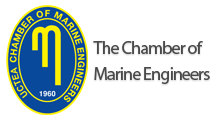

JEMS apply the Creative Commons Attribution NonCommercial 4.0 International Licence to all manuscripts to be published
ABSTRACTING & INDEXING
Volume: 10 Issue: 4 - 2022
| 1. | Full Issue Pages I - X |
| EDITORIAL (ED) | |
| 2. | Editorial Remzi Fişkin doi: 10.4274/jems.2022.98470 Page 210 Abstract | |
| ORIGINAL RESEARCH (AR) | |
| 3. | Comprehensive Risk Assessment Analysis of Accidental Falls in Shipyards Using the Gaussian Fuzzy AHP Model Abdullah Türk, Murat Özkök doi: 10.4274/jems.2022.04695 Pages 211 - 222 Falling from a height is the major cause of death and injuries in shipyards and similar constructive industries. This study aims to comprehensively investigate the causes of occupational accidental falls in shipyards. A solution methodology is presented to determine the weights of these causes of accidental falls. In this solution methodology, weighting scores are assigned to experts according to their professional position, work experience, and education level. Moreover, consistency analysis is performed for expert judgments and their aggregated forms. Although the findings show that the dominant cause of accidental falls in shipyards is human risks, the shipyard area and environmental risks, organizational risks, and safety risks should also be considered as a whole. |
| 4. | A Crossover Operators in a Genetic Algorithm for Maritime Cargo Delivery Optimization Vadim V. Romanuke, Andriy Y. Romanov, Mykola O. Malaksiano doi: 10.4274/jems.2022.80958 Pages 223 - 236 Maritime cargo delivery accounts for over 80% of the worlds trade and contributes about 3% of the worlds gross domestic product. Here, we focus on the problem of minimizing the maritime cargo delivery cost by an amount equivalent to the sum of the tour lengths of feeders used for the delivery. We formulate maritime cargo delivery cost reduction as a multiple traveling salesman problem and use a genetic algorithm to solve it. In addition to minimizing the route length, the algorithm indirectly reduces the number of feeders. To increase the performance of the genetic algorithm, we implement a 3-point crossover operator, which takes three chromosomes and returns slightly more complex crossover mutations than the known 2-point crossover operator. These two operators must be used in confluence. We propose to run both the 2-point crossover algorithm and the 2-point-and-3-point crossover algorithm in parallel and select the route with the shortest length. The route length is cut down by a few percent, which makes a big difference in how much it costs to ship cargo by sea. |
| 5. | Fleet Optimization in Ro-Ro Transportation: A Case Study from Türkiye Selçuk Kahveci, Ersan Başar, Özgür Ican doi: 10.4274/jems.2022.89166 Pages 237 - 250 Although maritime transport is the cheapest transportation mode, the management of ships is very costly. Ship management companies try to get the minimum cost and highest profit using ships effectively and efficiently. Therefore, they need to carry out shipment planning at the optimum level. The purpose of this research is to perform the optimum shipment planning of six ships in different sizes and capacities in a Ro-Ro fleet belonging to a ship management company operating in the Black Sea Region. On the basis of data obtained from the company that had problems in operating ships in its fleet effectively and efficiently, a model in A Mathematical Programming Language has been created, and this model has been solved with the GNU Linear Programming Kit, a mixed-integer program solver. Shipment planning has been conducted within the framework of six ships and a 1-year planning horizon, and profit maximization has been determined as the objective function. |
| 6. | Examining the Cointegration Relationship Between the Container Trade in the Mediterranean and the Level of Labor Force Participation: A Panel Data Study Erdal Arlı, Mehmet Sıtkı Saygılı, Yasemin Nemlioğlu Koca doi: 10.4274/jems.2022.08831 Pages 251 - 259 Today, container transportation and intermodal connections by sea contribute significantly to the economic activities and trade volume of the nation and region where the transportation is conducted. This study evaluates the volume of containers handled between 2000 and 2020 in the ports of Türkiye, Greece, Italy, and Spain in the Mediterranean Basin, as well as the labor force, and determines whether the two variables are co-integrated. The Organization for Economic Co-operation and Development provided information on the volume of containers handled in TEUs, and the World Bank provided information on the labor force. Two variables were tested for cross-sectional dependency, homogeneity, second-generation panel unit root, panel cointegration, and causality. Although a long-term relationship between the two variables could not be determined as a result of the analysis, it was determined that the two variables were Granger causes of each other and had a bidirectional causality relationship. In this context, it is evident that both data substantially impact one another. The results indicate that the maritime sector responds to changes in a countrys economy and trade volume through a short-term decrease or increase in capacity. |
| INDEX | |
| 7. | 2022 Reviewer Index Page E1 Abstract | |
| 8. | 2022 Subject Index Pages E2 - E3 Abstract | |
| 9. | 2022 Author Index Page E4 Abstract | |










